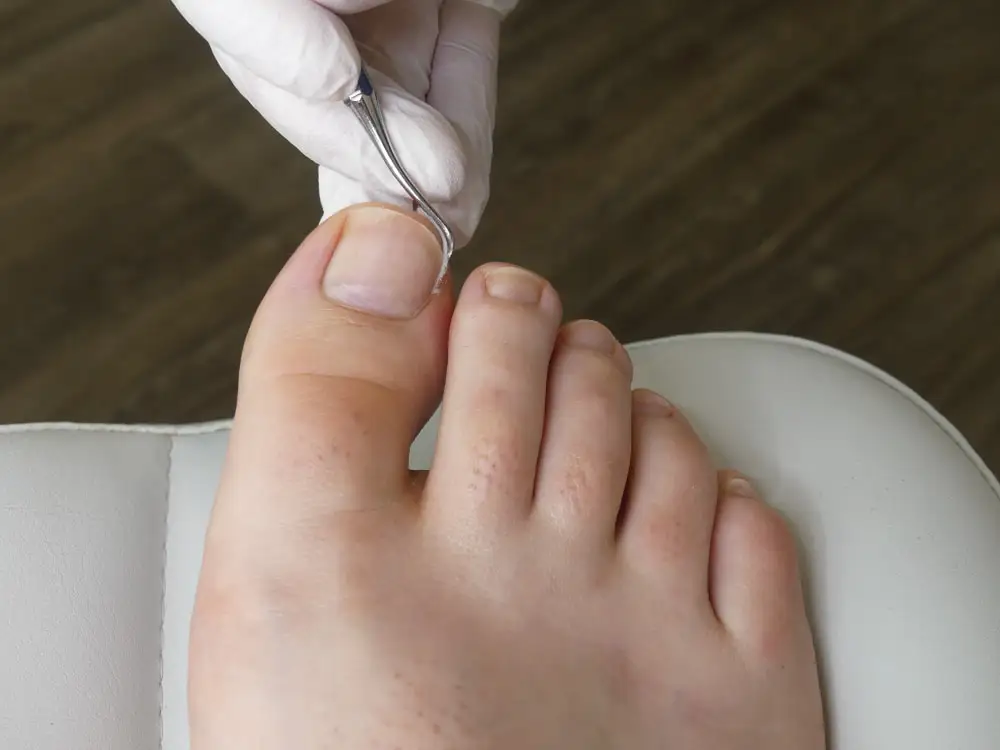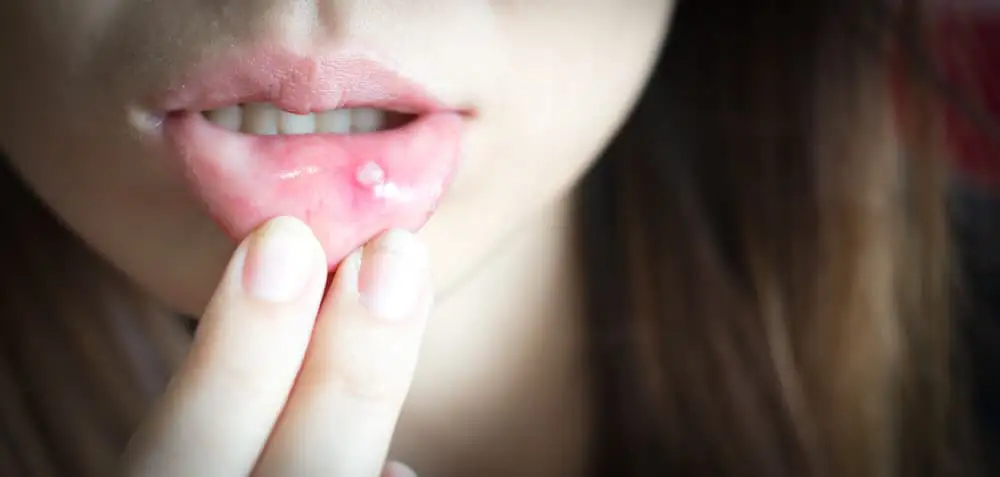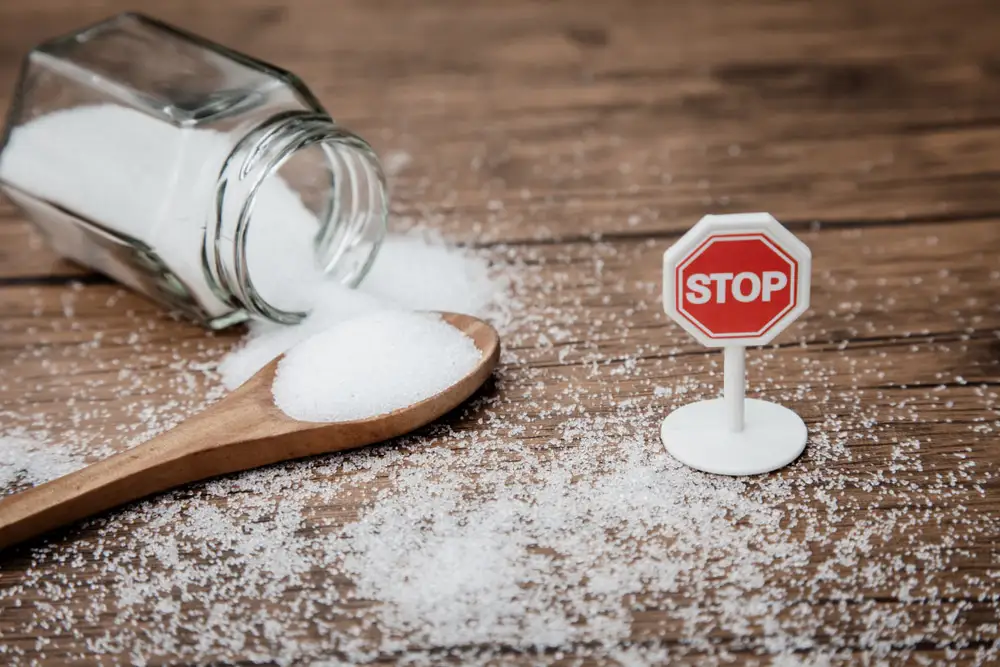Ingrown toenails occur when the corner or edge of a toenail curves and breaks through the skin of the nail and the skin surrounding the nail. It is a common condition and typically affects the big toe. If it becomes infected (you notice pus or fluid) and is left untreated, it can spread and infect the underlying bone. So it’s important to attend to the condition as soon as possible. Here’s our guide on how to fix ingrown toenails.

What Are The Symptoms?
If you have an ingrown toenail, the area may be:
- Tender or painful
- Red
- Swollen
- Surrounded by hardened skin
What Causes It?
Ingrown toenails are caused by:
- Cutting your toenails too short or not straight across. Cutting down the edges of the nail may cause a spike or encourage the nail to grow into the skin.
- Wearing shoes, socks or tights that are too tight can crowd your toes and put pressure on your toenails. If footwear is too narrow or small, it may influence the way the nail grows and cause it to change direction and go into the skin.
- Having poor foot hygiene.
- Picking or tear at the corners of your toenails.
- Having toenail trauma, for example, by stubbing your toe, dropping something on it, or it being stepped upon. If the nail has been damaged, it may change how it grows in the future.
- Having sweaty feet, which makes your skin soft and it is easier for toenails to dig in.
- Having toenails with naturally curved edges or are fan-shaped — this is sometimes due to genetics.
How To Fix An Ingrown Toenail
- Soak your foot in warm, salted water for 15 to 20 minutes, three or four times daily (one tablespoon of regular table salt is recommended). This will discourage infection of the affected area and may help ease pain and reduce swelling. Adding Epsom salts (a naturally occurring mineral compound – magnesium sulphate) may also bring relief. This method is NOT interchangeable with soaking in the ocean, as the ocean contains a large variety of bacteria that will increase the risk of infection.
- Alternatively, you can soak your foot in apple cider vinegar which is said to have anti-inflammatory, antiseptic and pain relieving qualities. For this remedy, combine a quarter of a cup of apple cider vinegar with a basin of water. Soak your foot for up to 20 minutes a day, and dry it thoroughly after soaking.
- Use a cotton bud to gently push away the skin from the nail.
- Repeat each day for a few weeks to allow the nail to grow.
- Applying antiseptic ointment (like Betadine) can promote healing and help reduce the risk of infection. Make sure you follow the manufacturer’s instructions. Bandage the toenail after application.
- Use a toe protector. These provide a cushioning barrier for ingrown toenails and act as a covering for the entire toe. Some brands’ products also include a medicated gel to help soften your toenails for easy trimming.
- Wear comfortable shoes and socks. Improper footwear is the leading cause of ingrown toenails. During the healing process, avoid shoes if you can or wear sandals as much as possible to limit pressure on your toenails.
- If you are in pain, paracetamol may help. If swelling is present, ibuprofen may be a better option as it relieves both pain and swelling. Again, ensure you follow the manufacturer’s instructions, particularly in terms of dosage.
When To See A Doctor
You should see a doctor and/or podiatrist (who are experts in the foot, ankle and lower limb health) for an ingrown toenail if:
- The pain and swelling are severe
- Redness increases
- You have throbbing pain
- You notice pus around the nail
- It is emitting a foul odour
- Home remedies don’t improve the condition
- You have an allergic skin reaction to a home remedy
Your doctor will probably prescribe oral antibiotics that can help reduce swelling and pain and fight infection. Depending on the condition of your nail, other methods typically include:
- Taping the nail. With this method, your healthcare provider pulls the skin away from the ingrown nail with tape.
- Placing a gutter splint under the nail. With this method, your healthcare provider will numb the toe and slip a tiny slit tube underneath the embedded nail. This splint stays in place until the nail has grown above the skin’s edge. This method can help ease the pain of an ingrown nail as well.
- Partially removing the nail. Your GP may numb the toe and trim or remove the ingrown portion of the nail.
When Surgery Might Be Needed
If your ingrown toenail shows more severe symptoms (like pain, pus and inflamed skin), your healthcare provider may decide you need surgery. Procedures typically involve:
- Nail avulsion — Removing your whole toenail.
- Wedge excision — Removing part of your toenail where it is growing into the skin, along with the area of tissue in the corner from which your toenail grows.
- Nail bed ablation — Removing part of the toenail or the whole toenail and then applying a chemical (usually phenol) to the tissue area from which the toenail grows. Surgery or electrocautery (using heat from an electric current to remove harmful tissue) can also be used.
- Zadek’s procedure — Removing your whole toenail and then cutting away the area of tissue from which your toenail grows.
After surgery, keep your leg elevated as much as possible to help the swelling settle. After that, you can usually start to be a little more active, however, do not play sports or do strenuous exercise for two weeks. You should also keep the dressing dry.
Unfortunately, sometimes, even with successful surgery, the problem occurs again. However, surgical approaches are better at preventing recurrence than nonsurgical methods.
It’s also worth mentioning that minor foot problems like ingrown toenails can cause serious complications in some people, and can occur rapidly. If you have type 1 or type 2 diabetes, nerve damage in your foot or leg, an infection around the nail, a compromised immune system, or another condition that causes poor circulation, you should see your GP as soon as possible.
References
- 2023, Ingrown toenails, Healthdirect
- 2023, Ingrown toenails, Mayo Clinic
- Annette McDermott, 2022, 10 Ingrown Toenail Remedies: Natural, Medication, and More, Healthline
- 2023, Surgery for ingrowing toenail (adult), Healthdirect
- 2023, How To Fix an Ingrown Toenail, Foot Centre Group
What Causes Mouth Ulcers? How To Treat & Prevent Them Effectively
Mouth ulcers are a common oral condition that affect most people at some point in their lives. They can be uncomfortable, but they are usually harmless and will heal within 10 to 14 days without treatment. Here’s everything you need to know about mouth ulcers, including what they are, what causes them, the best treatments,…
Acute Vs Chronic Medical Conditions
No matter how old or young you are, we are all susceptible to acute and chronic medical conditions. Both conditions differ in how long they last and how severe the diagnosis is. An illness or condition can be as simple as the flu, or in a more severe case cancer or arthritis. Whether it is…
How Much Sugar Per Day?
Sugar is a type of carbohydrate and a source of energy for our bodies. It can occur naturally in foods like fructose in fruit, glucose in fruits and vegetables, and maltose in wheat and barley. However, manufacturers also often add sugar to extend the shelf life of foods, improve their appearance and/or make them taste…




